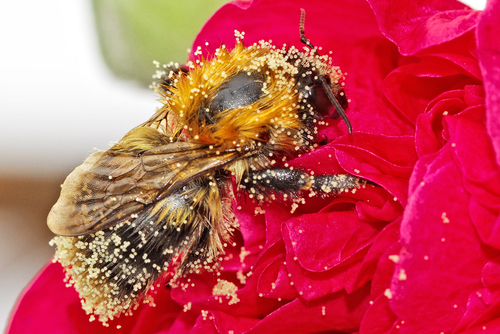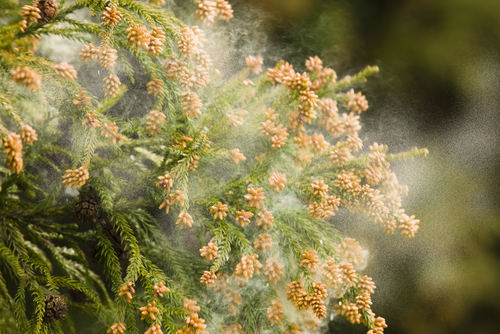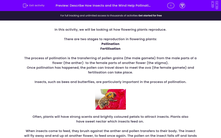In this activity, we will be looking at how flowering plants reproduce.
There are two stages to reproduction in flowering plants:
Pollination
Fertilisation
The process of pollination is the transferring of pollen grains (the male gamete) from the male parts of a flower (the anther) to the female parts of another flower (the stigma).
Once pollination has happened, the pollen can travel down to meet the ova (the female gamete) and fertilisation can take place.
Insects, such as bees and butterflies, are particularly important in the process of pollination.

Often, plants will have strong scents and brightly coloured petals to attract insects. Plants also have sweet nectar which insects feed on.
When insects come to feed, they brush against the anther and pollen transfers to their body. The insect will fly away and end up at another flower, to feed once again. The pollen on the insect falls off and lands on the sticky stigma.
A pollen tube forms and the pollen grain joins with the ova in the ovule - fertilisation has occurred successfully.
The wind can also help with pollination. Some plants have their anthers on the outside of the flower. When the wind blows, the pollen is blown off the anther and floats in the air, often travelling far away from the 'parent' plant. The pollen may land on another plant's stigma triggering the growth of a pollen tube and eventually fertilisation.
Wind-pollinated plants usually produce lots of pollen to increase the chances of successful fertilisation. They also have pollen grains that are very light to help them float in the wind.
Some plants also have the stigma (female part) on the outside, which helps to catch drifting pollen grains easily.

In this activity, we're going to look at how insects and the wind help with pollination.









